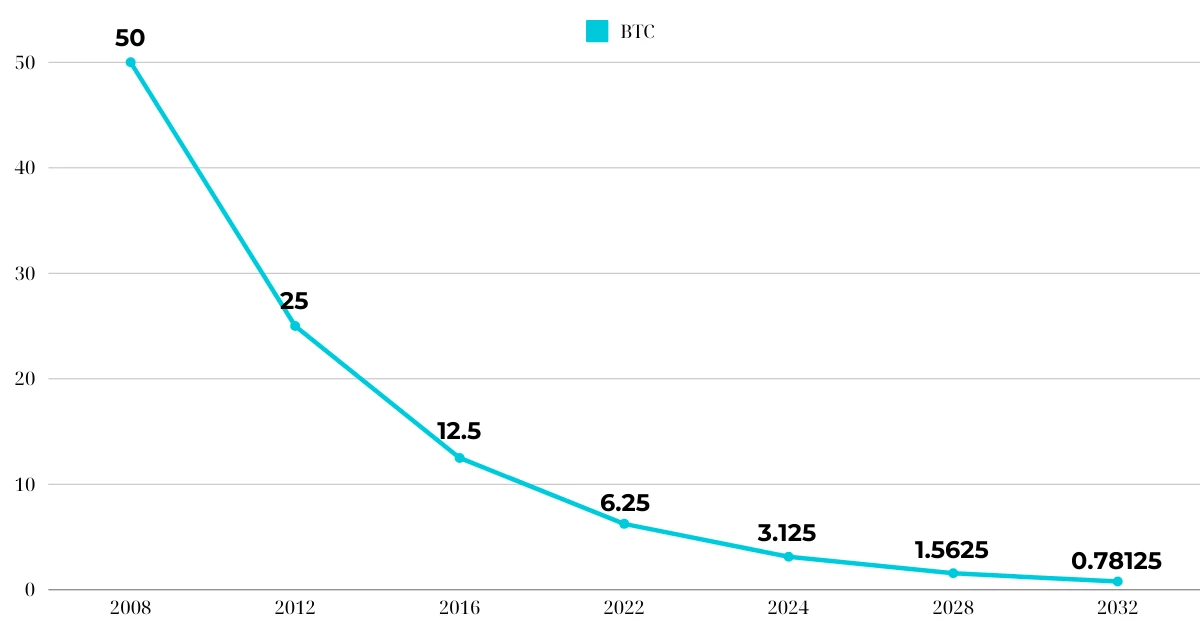Bitcoin mining requires miners to have full preparation of both hardware and software to generate a cryptographic number equal to or less than the number set by the Bitcoin network’s difficulty algorithm.
So, how does Bitcoin mining work? Let’s explore this issue through the following article.
Key Takeaways
|
How Does Bitcoin Mining Work?
Mining is performed by miners who utilize hardware and software to produce a cryptographic number that matches or is lower than a number predetermined by the Bitcoin network’s difficulty algorithm. The miner who first discovers the solution to this puzzle is rewarded with Bitcoins and initiates the cycle anew.
Proof of Work
Proof of Work (PoW) stands as a consensus mechanism mandating considerable computational input from a network of devices. This concept finds its roots in digital tokens, pioneered by Hal Finney in 2004 with the notion of “reusable proof of work”, employing the 160-bit Secure Hash Algorithm 1 (SHA-1).
Proof of Work serves as a method employed by cryptocurrencies to validate the precision of newly added transactions within a blockchain. Given the absence of a central governing authority in decentralized networks utilized by cryptocurrencies and other DeFi applications, proof of work emerges as a crucial mechanism to uphold the integrity of incoming data.
The block mining problems in the Proof of Work mechanism include:
- Hash Function: The process of transforming varying input data of different sizes and types into a standardized output with a specific length. For example: If you use a hash function for a video or any text file, the output will still consist of a character string with the same length.
- Integer Factorization: This problem entails identifying a number given that it is the product of two distinct numbers.
- Guided Tour Puzzle Protocol: During a potential DDoS attack, the server must recalculate the hash of several nodes in a predetermined sequence. This situation presents the challenge of “identifying a sequence of hash values”.
The structure of a Proof of Work blockchain is designed to encapsulate various data elements including transaction amounts, wallet addresses, timestamps, and dates. These details are meticulously recorded and encrypted within block headers, represented as hexadecimal numbers produced via the blockchain’s hashing function.
Verifying and Recording Transactions
The verification and recording process is carried out as follows: After the mining machine solves a hash function, a new block will be created and continue to be propagated to nodes on the Bitcoin network. At each node, the verification process will commence: the transactions within the new block will be checked for validity. If everything is correct, the transactions are accepted, and the new block is added to the blockchain, enriching the transaction history and making it immutable. This ensures the integrity and reliability of the data on the Bitcoin network.
Bitcoin Mining Requirements
During the mining process, miners will need to organize and build algorithms to perform Bitcoin mining more quickly. Here are some widely used algorithms:
SHA-256 algorithm
SHA (Secure Hash Algorithm), also known as a secure hashing algorithm, is recognized by the FIPS (Federal Information Processing Standard) in the United States.
Its purpose is to transform a given dataset into a fixed-length output with high variance. SHA-256, a branch of cryptographic hash functions used in the Bitcoin network, stands as one of the most robust algorithms today.
SHA-256 is employed in generating Bitcoin addresses, significantly enhancing security measures. This Bitcoin mining algorithm creates a fixed 256-bit hash code, equivalent to 32 bytes, making it nearly unique.
Once a hash chain is formed, it cannot be reversed, rendering SHA256 suitable for password verification, anti-counterfeiting measures, and especially hash function authentication.
SHA-256 boasts efficient raw processing support. Initially, one could mine coins using a CPU in home computer. However, over time, as the coin’s difficulty increases, efficient Bitcoin mining necessitates the utilization of specialized processors called ASICs.
Scrypt algorithm
Scrypt, utilized in Bitcoin mining, is a memory-intensive key derivation hash function. It generates pseudo-random numbers stored in RAM.
Upon accessing these numbers via the algorithm, they yield results. Generating numerous numbers demands substantial computation and RAM. With repeated access, Scrypt optimally utilizes RAM and hashing power to generate new blocks swiftly.
Although not as fast as SHA256, Scrypt adjusts the number of random variables stored for Bitcoin mining.
Scrypt’s key benefit lies in leveling the playing field among miners in the network, attracting more investors to contribute to mining and value creation.
Ethash algorithm
Ethash, the hashing algorithm employed for proof-of-work in the cryptocurrency market on Ethereum, utilizes alternate versions of SHA3-256 and SHA3-512, often referred to as Keccak-256 and Keccak-512.
Since version 1.0, Ethash has featured a design resistant to ASICs, simplifying verification processes. Additionally, it can be slightly modified to reduce overhead costs.
Ethash is preferred by many Bitcoin miners due to its array of benefits. The algorithm exhibits high IO saturation, making it highly compatible with computer GPUs.
Moreover, it facilitates low-configured client verification and swift processing capabilities, enabling fast booting for such clients.
Mining Rewards
The allure of mining lies in the lucrative rewards of Bitcoins, whose value has surged significantly over time, driving people to invest both time and money in the endeavor.

When a miner successfully adds a block to the blockchain, they receive a reward of 3,125 Bitcoins. The reward undergoes halving roughly every four years or every 210,000 blocks. In addition, miners also receive additional profits from transaction fees alongside block rewards.
As of April 2024, with Bitcoin trading at around $63,000, the value of 3,125 Bitcoins equates to $196,875.
Why Is Bitcoin Mining So Difficult?
There are three main reasons leading to the difficulty in Bitcoin mining.
- The high computational requirements sometimes demand miners to sift through millions, even billions, of nonce values to find a hash that meets specific requirements. This intensive process underscores the intricate nature of Bitcoin mining, requiring significant computational power and energy expenditure.
- The mechanism for adjusting difficulty ensures that the time between new blocks is approximately 10 minutes. This regulation is vital for maintaining the integrity and stability of the Bitcoin network, preventing rapid block generation or stagnation.
- Fierce competition among miners necessitates top-of-the-line hardware to maintain competitiveness. Efficient hardware is paramount, as it directly impacts the speed and success rate of mining operations. Staying ahead in this competitive landscape requires continuous investment in cutting-edge technology.
The Bottom Line
Through this article, questions about how Bitcoin mining work operates have been addressed. Bitcoin mining plays a vital role in verifying and confirming new transactions on the Bitcoin blockchain and introducing new Bitcoins into circulation. While feasible on various hardware setups, joining a mining pool is necessary to optimize performance and profitability in the competitive mining landscape.








